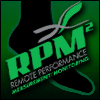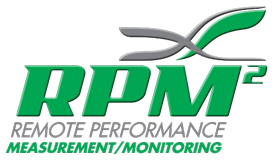 Improving speed is a common goal for any athlete. One thing that can help an endurance athlete overcome plateaus or push their performance to the next level is understanding the mechanics behind speed and adjusting training to achieve fluid, biomechanical movement. This week, our team at RPM² discusses important fundamentals that relate to speed.
Improving speed is a common goal for any athlete. One thing that can help an endurance athlete overcome plateaus or push their performance to the next level is understanding the mechanics behind speed and adjusting training to achieve fluid, biomechanical movement. This week, our team at RPM² discusses important fundamentals that relate to speed.
Bi-Lateral Equivalence
As mentioned in many of our previous blogs, achieving bi-lateral equivalence (bi-lateral symmetry) can dramatically enhance an athlete’s performance. Bi-lateral symmetry refers to a balance of power in the force exerted by each leg in movement. When athletes lack symmetry, it can affect their speed and even increase the risk for injury.
Power Output
Defined as the product of force and velocity, maximal power output can enhance speed and stamina in both endurance-related and sprint-related sports. Improving power output can influence the fluidity of movement and promote proper biomechanics. Common methods for boosting power output can be as simple as running at an incline or making weight and repetition adjustments in strength training.
Stamina
Also integral to athletic performance, stamina is often described as a cycle where an athlete maximizes power then recovers repetitively throughout the duration of activity. Ideally, stamina should allow an athlete to maintain proper form and movement during times of fatigue. Building stamina involves a commitment to rigorous training, even in off-season, with an emphasis on measureable goals.
Stride Length and Stride Frequency
The length of one’s stride allows an athlete to perform more efficiently by maximizing the amount of distance covered. Improving stride length is typically achieved by increasing power output and developing optimal direction force. Increasing stride frequency requires an athlete to work on developing proper positioning and form along with isolating muscles in the hips and lower abdomen in strength training and conditioning.
RPM² is a unique footbed device that measures bi-lateral equivalence, gait, range of motion, and weight distribution so that discrepancies in movement can be identified and addressed in training. The information gathered by these revolutionary shoe inserts is sent to your smart phone or tablet in the form of an app to help you or your trainer adjust your training to improve performance.








